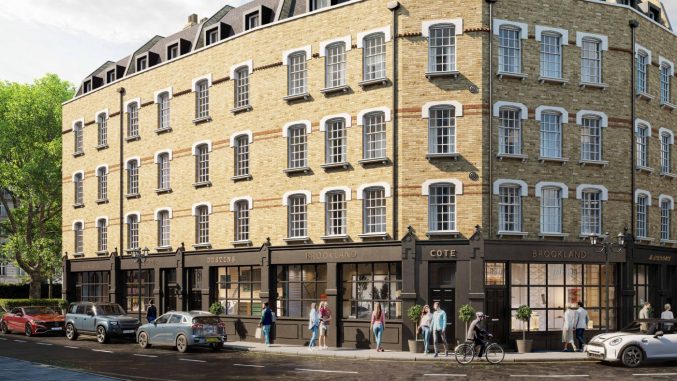A Guide to Part-Complete Funding
By Henry Manley-Cooper

There has been a huge increase in demand for funding against part-complete development projects in the past 12 months.
Since the first UK lockdown, developers have faced cost overruns and unexpected delays meaning that their projects have not been going to plan under their original funding option.
This was evidenced in the September 2020 FMB Housebuilders Survey, where it was reported that 42% of respondents were stalled for financial reasons over the past year, rising from 39% in 2019.
Whilst the construction industry was one of the first to come back and has stayed around since the middle of the first lockdown, the same Housebuilders report also indicated that the majority of small builders closed their sites to protect their workforce and in response to supply chain difficulties.
This meant that schemes weren’t moving at the pace expected.
At the start of the crisis some lenders could offer flexibility with term extensions, but these were temporary solutions.
In reality, we are only seeing the true consequences of delays and cost overruns now. There are an increasing number of developers, stuck at any stage of their project which need funds to complete.
The traditional, bridge – development – bridge process has disappeared against a backdrop of social and economic chaos.
For some development lenders, the risk of further extension to terms is too great and for most others, stepping in partway through a project is out of the questions due to the complexity of assessment.
There are, however, some expert lenders out there who have introduced an option which speaks to the challenges developers are facing today.
Avamore Capital were pioneers of the Finish & Exit which is a product providing a part-complete funding solution.
Part Complete Funding Explained
The Finish & Exit is designed for projects which are part-way through the development and would not be eligible for a traditional developer exit finance because there are still works left to complete.
The COVID-19 crisis is expected to have left a number of borrowers on part-complete projects and so, the Finish & Exit can support when:
- The developer has run out of time on their existing development finance facility and cannot gain an extension from their current lender.
- The development finance facility has run out so there are insufficient funds to complete the project.
- The developer was relying on sales proceeds to fund the project which have not come in.
What can it provide?
The Finish & Exit product can provide the following for developers:
- Funding for the remaining project works on part-complete schemes.
- Refinance of an existing development finance facility.
- Drawdown of funds to complete the development.
- Time to sell the units once the development is complete.
- A potential pre-agreed equity release.
What do you need for a part-complete funding application?
To apply for part-complete funding, you will need to provide the same information to the lender and all other service providers which you’d expect to be sharing for any development facility.
There are additional layers to consider, however. For example, it is important to factor in the cost of instructing new professionals – valuer, monitoring surveyor and solicitor – and being aware that all KYC checks and due diligence will need to take place as, to the lender, this is a brand-new project.
The part-complete element makes things more, not less challenging and so being prepared and upfront is key.
In addition to the standard information, the lender needs to get a really clear sense of the situation which resulted in the project being left part complete.
Sometimes, things are out of the developer’s hands but, a lender needs to know it all, good and bad. If information is withheld, it’s likely that the deal will fall down later on in the process.
The lender will also need to liaise with the lead contractor and existing service provider team to gather the picture of works to date, being willing to share that information is really key to the lender being able to get comfortable and move things forward.
Part complete funding is so specialist because it relies on lots of different parties to understand the scope of works to dates.
Underwriters invest a huge amount of time into working closely with the borrower and the relevant professionals to determine the strength of the build and the situation behind the delays or cost overruns.
In order to be as prepared as possible, take a look below at an overview of what additional information all service providers will need because of the part built nature of the project.
Note that this is not an exhaustive list:
Lenders
In addition to the usual information expected, at the early stage, a lender will need to receive the following:
- Overview of works to date and circumstances behind why project has been delayed.
- Updated market value of the site.
- Latest MS report (if available).
- Details of how the project has been funded to date and the redemption amount on current debt.
Monitoring Surveyor
The Monitoring Surveyor will be heavily involved in the assessment particularly if a new one is instructed from the lender’s panel. The MS is integral in understanding the works to date and reassuring the lender that the build is acceptable:
- Costs incurred to date alongside the current construction programme, appraisal/cashflow including anticipated costs to complete.
- Provision of the executed build contract (if there is a new Contractor being appointed, we require the draft/executed build contract for the new Contractor alongside a copy of their latest filed accounts).
- If applicable, whether there remain any monies owed to the previous contractor.
- Details of relevant consultant and contractors involved including appointment letters/Professional Indemnity details and limits.
- Building regulations: Confirmation of registration with either the Local Authority Building control or an Approved Inspector.
- A copy of the latest building control report.
- Pre-contract Health & Safety plans and F10 notification confirmation.
- Status of utilities and drainage.
- Whether there are any non-standard construction materials being used.
- Whether there are there any collateral warranties, appointments or JCT contracts available from the design team and if they are assignable.
- Copies of all reports and surveys undertaken prior and throughout the development (ground investigation/contamination, Rights of Light, archaeological, ecological etc).
- Insurances/warranties including:
- Contractors’ All Risk Insurance/existing Buildings Insurance (if applicable).
- Public Liability.
- New build warranties.
- Collateral warranties.
Your Solicitor
- It is imperative that your solicitor is instructed as early as possible in order to give the required legal fee undertaking.
- Up to date searches are also key in ensuring there are no delays, most notably the local authority search which depending on the local authority, can take weeks to receive.
- With part-completed developments, we require confirmation as to whether there are any known legal disputes, issues or encumbrances.
- We require details of deferred payments/overage agreements at the earliest opportunity.

Henry is Head of Credit Analysis at Avamore Capital. He joined in 2018 as the team’s first Transaction Analyst after completing a MSc in Real Estate Finance and has been integral to the growth of Avamore. He is now responsible for leading a team of 4 Analysts and is committed to ensuring that Avamore offers a seamless and consistent customer experience at the start of every transaction.










You must be logged in to post a comment.